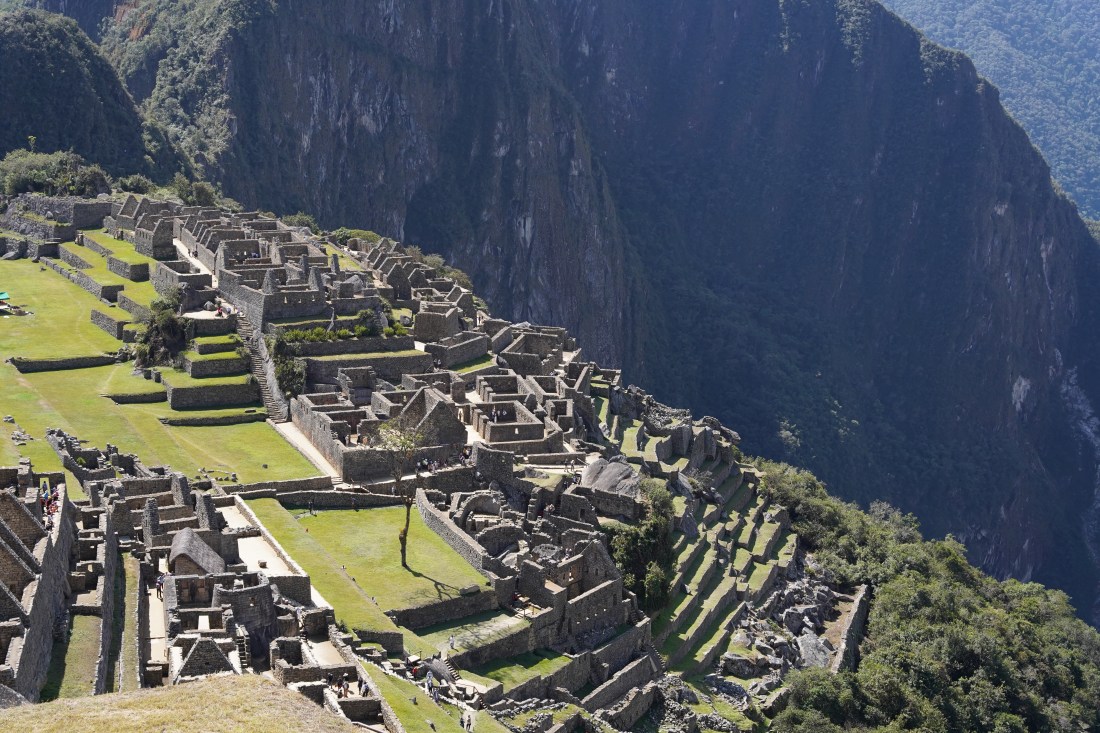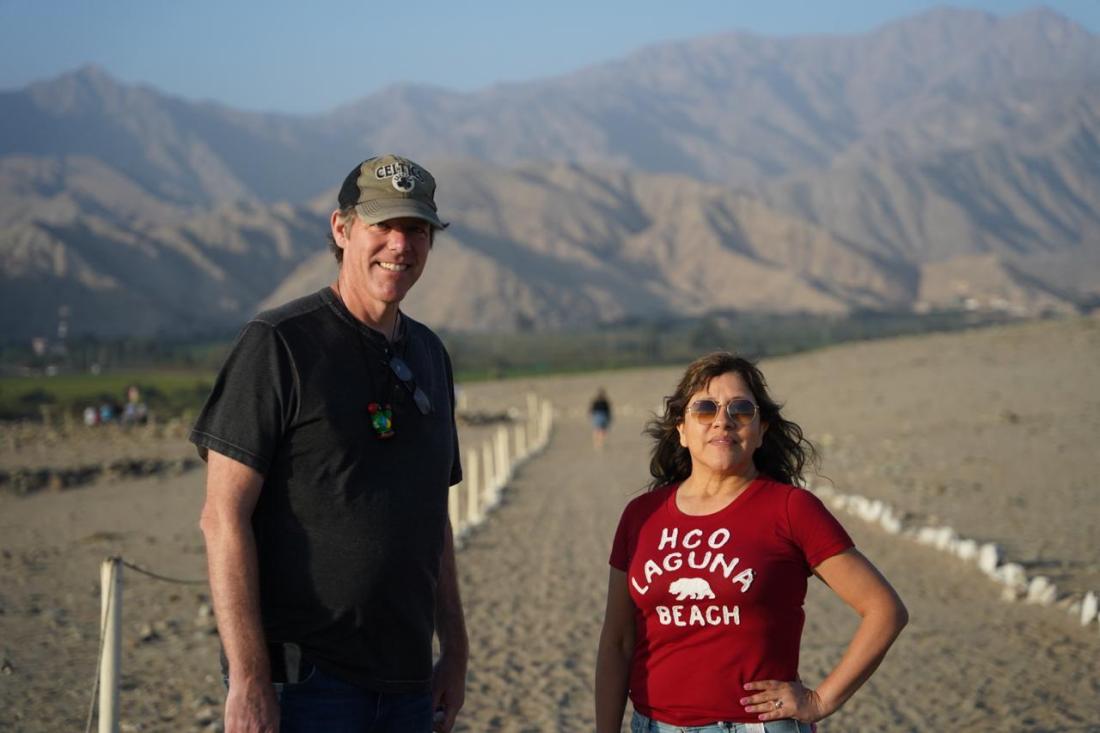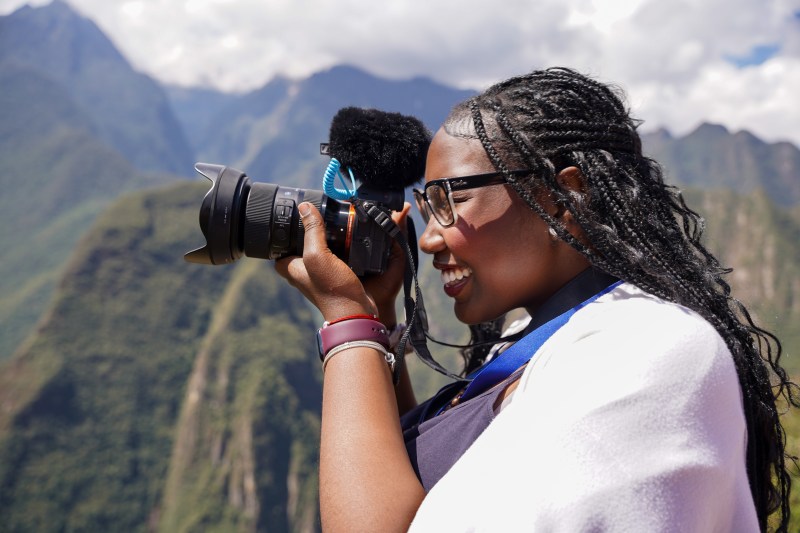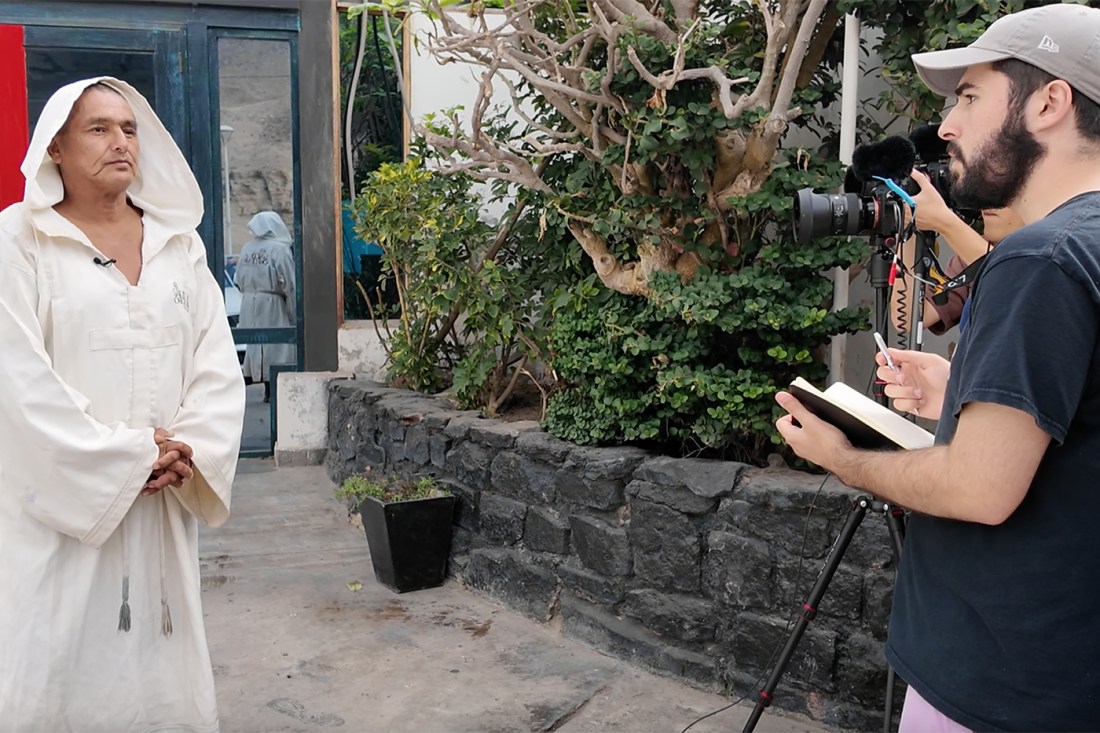Illegal fishing, cliff divers and stray cats: Northeastern students expose the pulse of Peru
A group of Northeastern students worked as a roving band of video journalists during a Dialogue of Civilizations that saw them reporting on everything from femicide to Peruvian sand boarding.

When most people think of Peru, they likely think of the ruins of Machu Picchu, the Inca Empire or fluffy alpacas. However, this summer a group of 22 journalism students from Northeastern University hit the ground in Peru to capture the complexity and beauty of the South American country firsthand.
As part of a month-long Dialogue of Civilizations program, students navigated the challenges of working in a new country to craft deeply reported stories that spotlighted illegal fishing, femicide, stray cats, sand boarding and everything in between. Led by Mike Beaudet, a professor of the practice in journalism and an investigative reporter at WCVB, and Yanet Monica Canavan, principal lecturer of Spanish, the program focused on video storytelling while fostering a deep, immersive understanding of Peruvian culture.
“To not see a glorified version of Peru but to see a true, authentic Peru for all of its problems and beauty and culture was an amazing experience that honestly can’t really be replicated,” says Kylee Hendrie, a senior journalism and media and screen studies student.
As soon as students arrived in Peru, they functioned as an international press corp, finding and pitching stories, talking to sources and shooting footage. There was even a translation team, made up of both Northeastern students and people from a local university, that helped with the language barrier.
“It became clear in that first week when they came in with these pitches that this was really a special group,” Beaudet says. “They had these really well-developed pitches, and I knew then that we were going to really turn some powerful stories.”
Students worked in teams of two to deliver a thoroughly reported documentary or video news report by the end of the program. Some students, like Hendrie, had extensive video and reporting experience, while others were able to learn through experience and collaboration.
Alongside their Pulse of Peru stories, students also captured footage for segments on Chronicle, WCVB’s human interest-focused program. The program ultimately yielded four Chronicle segments that students received producing credits on.


The program started before the students even arrived: Canavan started teaching students about the history, culture and contemporary issues of her home country in advance. The idea was to give them a foundation to work from, so that they could hit the ground running and have a better understanding of what stories to look out for and what questions to ask.
In addition to reporting, students went on cultural expeditions led by Canavan. They visited Machu Picchu, experienced Peru’s renowned food scene and talked firsthand with people in Lima’s underprivileged neighborhoods.
“They weren’t visiting the country as tourists,” Canavan says. “They really were part of the culture and interacting with it.”
The program was so successful and the stories so powerful that Beaudet and Canavan are planning a similar Dialogue next summer, this time taking students to Spain.



Talking with fishermen, their families and local conservation groups, Hendrie and Isabelle Elenes, an environmental and sustainability sciences student, reported on Peru’s fishing industry, its central place in the Peruvian economy and how illegal fishing and climate change-induced declines in fish populations have affected the industry.
Hendrie and Elenes ended up exploring a fishermen’s wharf in Lima, gathering information and forging connections with sources. Before long, they found themselves on a fishing boat in the early hours of the morning watching as fishermen hauled in the day’s catch.
“Since we were on 24/7, since we encountered some challenges that we didn’t necessarily expect, it required us to adapt on the spot,” Elenes says. “It was extremely rewarding to be able to overcome those challenges and also create something we were extremely proud of.”
As they learned how little action is being taken to protect the people who not only make a living off fishing but serve as the backbone of Peru’s largest industry, the story took on additional importance for Hendrie and Elenes.
“To have all these NGOs screaming at the top of their lungs that this is something we need to address, this is something the government needs to address, and no one is really listening to them just highlighted why we needed to capture a story and elevate those voices and bring that issue to the front of peoples’ minds,” Hendrie says.
Nikkia Jean-Charles, a journalism student, and Diana Sanchez, an English student, also found purpose in the story they ended up reporting in Peru. They produced a story about femicide, the dangers of machismo culture and violence against women in Peru, which has reached epidemic levels. A study of femicide in Peru found that 2023 was the deadliest year for women in the past decade: 258 were victims of femicide.
At the center of their story was Sheyla Torres, who was killed in 2018 by her ex-boyfriend, Romario Aco Rodriguez, and her mother, Magali Aguilar, who has been seeking justice ever since. These women became the human center in a story that took a systemic look at how the political and legal framework in Peru fails to provide protection for women and accountability for perpetrators of violence against women.
“It was amazing to see the resilience of Peruvian women about this,” Sanchez says. “All of this is happening and your government isn’t helping you, all of these systematic things are against you, then you’re there and you see how powerful they are.”
They talked not only with Aguilar but with a medical forensic examiner, an epidemiologist and a Lima superior court judge. They had so many sources and became so connected to the story that they have plans to produce a second report on the subject.
“It definitely makes me have a more of a mission to continue this line of journalism –– investigative reporting –– and sharing stories for people because they’re not just statistics,” Jean-Charles says.
To find the entire collection of student-produced stories, visit Pulse of Peru.






